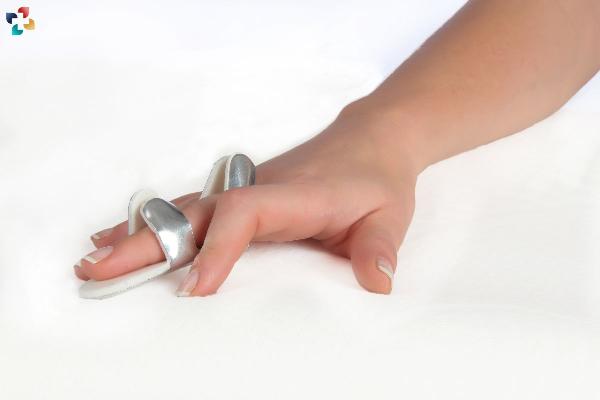Finger Sprains: Ligament Injuries in the Fingers

Strong 8k brings an ultra-HD IPTV experience to your living room and your pocket.
Finger sprains, a common yet often overlooked injury, occur when the ligaments in the fingers are stretched or torn. These injuries can result from a variety of activities, from sports and accidents to everyday tasks. Understanding finger sprains and their treatment is crucial for quick recovery and to prevent long-term damage.
What Are Finger Sprains?
It involves the stretching or tearing of ligaments, the connective tissues that stabilize joints. The fingers are particularly susceptible to sprains due to their frequent use and the various stressors they encounter. These sprains can range from mild to severe, with symptoms depending on the extent of the injury.
Causes of Finger Sprains
This can happen in numerous situations. Common causes include:
Sports Injuries: Activities such as basketball, football, and volleyball often lead to these sprains due to contact with the ball or opponents. For instance, catching a basketball poorly can result in a finger sprain.
Accidents: Everyday accidents like accidentally hitting your finger with a hammer or catching it in a door can lead to sprains.
Falls: Falling and landing on an outstretched hand can cause finger sprains, as the force of impact may overstretch or tear the ligaments.
Repetitive Stress: Overuse of the fingers in repetitive tasks can weaken the ligaments over time, making them more prone to sprains.
Symptoms of Finger Sprains
Finger Sprains: Causes, Symptoms, Diagnosis, and Treatment | The Lifesciences Magazine
Recognizing the symptoms of finger sprains is essential for proper treatment. Common symptoms include:
Pain: The primary symptom of a finger sprain is pain, which may be sharp or throbbing, depending on the severity of the injury.
Swelling: Swelling around the affected finger joint is a typical response to ligament injury.
Bruising: Discoloration or bruising may appear around the sprained area due to bleeding under the skin.
Difficulty Moving: A sprained finger may be difficult to move or fully extend, causing discomfort or pain during movement.
Tenderness: The area around the sprain may be tender to the touch.
Diagnosis of Finger Sprains
To accurately diagnose a finger sprain, a healthcare professional will typically perform a physical examination and may recommend imaging tests. These tests might include:
X-rays: X-rays can help rule out fractures or other bone-related injuries that might mimic the symptoms of a finger sprain.
MRI: An MRI might be used to assess the extent of ligament damage, especially in more severe cases.
Treatment Options for Finger Sprains
Pectoralis Major Strain: Causes, Symptoms, Treatment, and Prevention | The Lifesciences Magazine
Proper treatment for it is essential to promote healing and prevent complications. Treatment strategies include:
Rest: Avoid using the injured finger to prevent further strain on the ligaments. Resting the finger is crucial for recovery.
Ice: Applying ice to the sprained finger helps reduce swelling and numb the pain. Ice should be applied for 15-20 minutes every hour during the first 48 hours after the injury.
Compression: Using a compression bandage can help control swelling. Ensure the bandage is snug but not too tight.
Elevation: Elevating the injured finger above the heart level can help reduce swelling by allowing fluids to drain away from the affected area.
Pain Relief: Over-the-counter pain medications, such as ibuprofen or acetaminophen, can help manage pain and reduce inflammation.
Splinting: In some cases, a splint might be used to immobilize the finger and provide support while the ligaments heal.
Physical Therapy: For more severe sprains, physical therapy might be recommended to restore strength and range of motion to the finger.
Preventing Finger Sprains
Preventing this sprains involves a combination of proper techniques and precautions. Some preventive measures include:
Using Proper Equipment: In sports, wearing appropriate protective gear, such as gloves or finger pads, can reduce the risk of finger injuries.
Practicing Good Technique: Learning and practicing proper techniques, whether in sports or daily activities, can help minimize the risk of sprains.
Strengthening Fingers: Engaging in exercises to strengthen the fingers and improve flexibility can help prevent sprains by enhancing the ligaments’ resilience.
Avoiding Overuse: Taking breaks and not overusing the fingers during repetitive tasks can reduce the risk of strain and injury.
Complications of Untreated Finger Sprains
Finger Sprains: Causes, Symptoms, Diagnosis, and Treatment | The Lifesciences Magazine
If finger sprains are not properly treated, they can lead to complications. These may include:
Chronic Pain: Ongoing pain or discomfort in the affected finger can persist if the sprain is left untreated.
Reduced Mobility: Lack of treatment can result in limited movement or stiffness in the finger joint.
Joint Instability: Severe sprains may lead to long-term instability or weakness in the finger joint.
Arthritis: Untreated sprains can sometimes contribute to the development of arthritis in the affected joint.
When to Seek Medical Help
While many finger sprains can be managed at home, it’s important to seek medical attention in the following situations:
Severe Pain: If the pain is severe and doesn’t improve with home treatment, medical evaluation is necessary.
Deformity: Any visible deformity or abnormal positioning of the finger should be assessed by a healthcare professional.
Inability to Move: If you cannot move the finger or if movement is extremely painful, seek medical advice.
Persistent Swelling: If swelling persists or worsens despite home treatment, it may indicate a more serious injury.
Conclusion
Finger sprains are common injuries that occur when the ligaments in the fingers are stretched or torn. Recognizing the symptoms, understanding the causes, and applying appropriate treatment are crucial for effective recovery. By taking preventive measures and seeking timely medical attention when necessary, you can manage finger sprains effectively and minimize the risk of complications. Proper care and attention can help ensure that your fingers remain healthy and functional, allowing you to continue your daily activities without interruption.
Visit The Lifesciences Magazine For More
Note: IndiBlogHub features both user-submitted and editorial content. We do not verify third-party contributions. Read our Disclaimer and Privacy Policyfor details.


